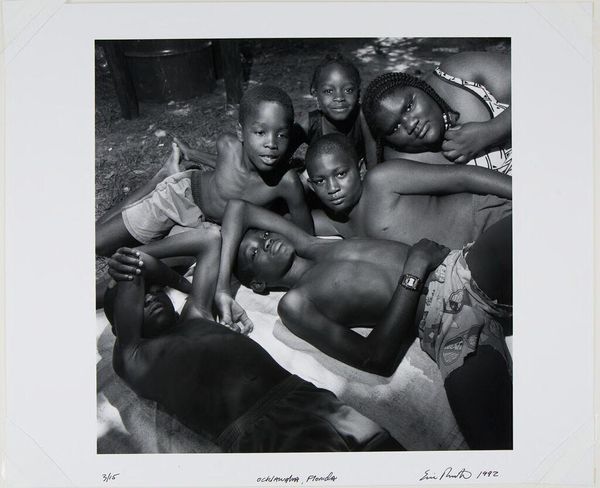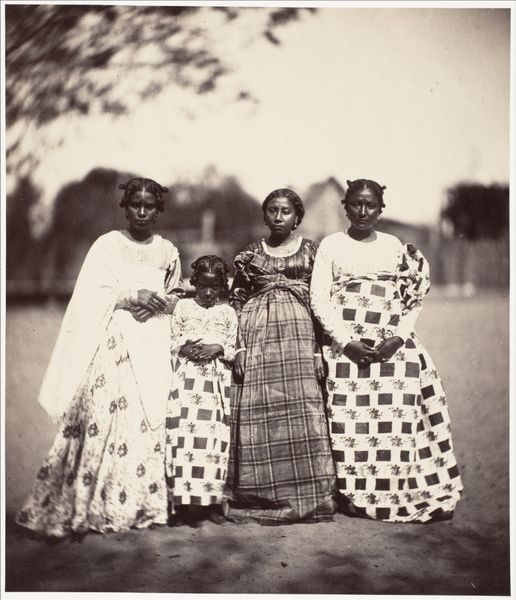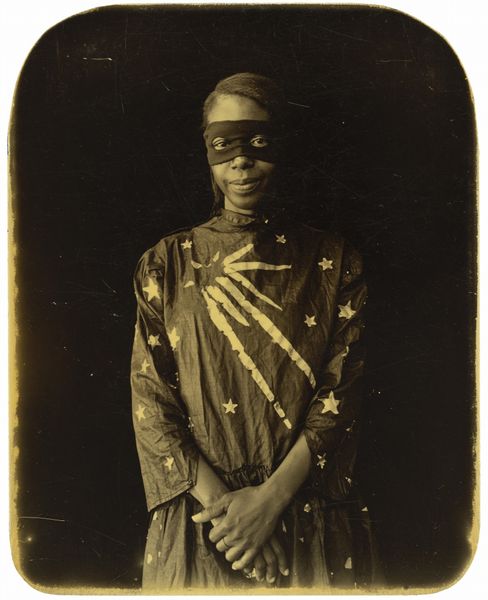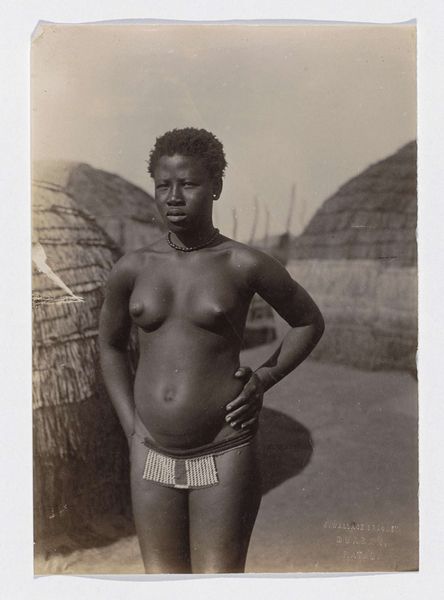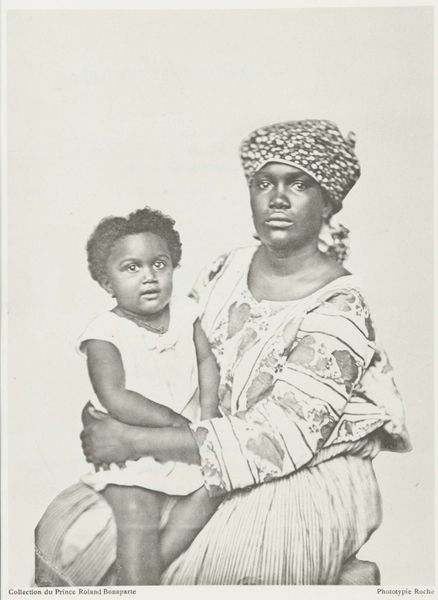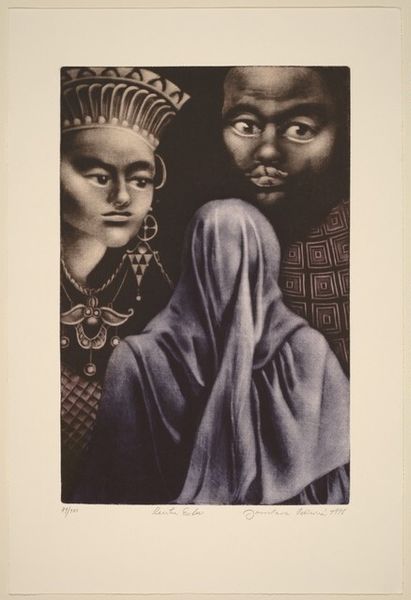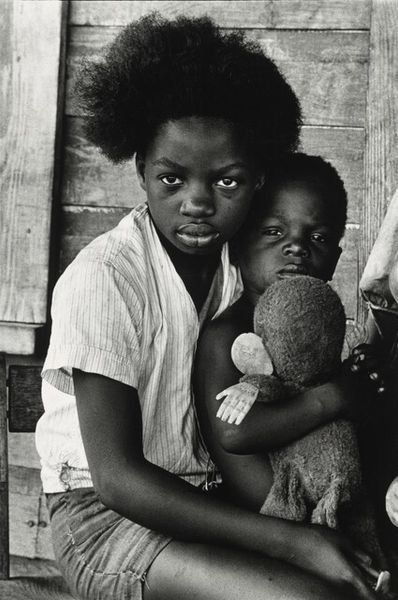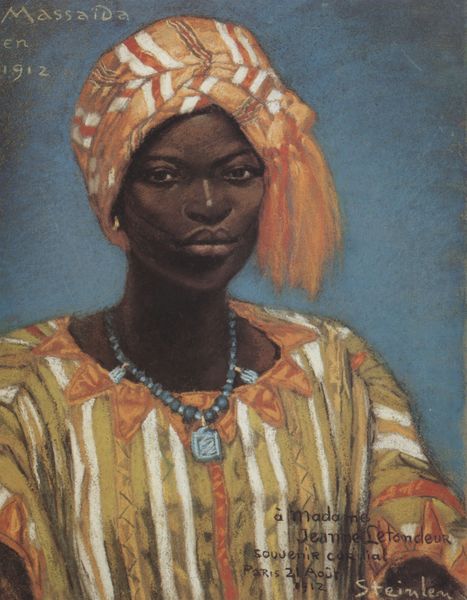
photography, gelatin-silver-print
#
portrait
#
african-art
#
black and white photography
#
portrait image
#
photography
#
black and white
#
gelatin-silver-print
Dimensions: image: 50.17 x 49.85 cm (19 3/4 x 19 5/8 in.) sheet: 56.04 x 63.5 cm (22 1/16 x 25 in.) mount: 56.04 x 68.74 cm (22 1/16 x 27 1/16 in.)
Copyright: National Gallery of Art: CC0 1.0
Curator: This gelatin-silver print, likely created between 1967 and 1972, is titled "Three Girls, One Reclining, Dahomey" by Irving Penn. What is your initial response? Editor: Stark. The contrasting values in the black and white emphasize the subjects’ skin and clothing, drawing the eye to texture, shadow, and pattern, all while capturing a moment of striking vulnerability and presence. Curator: The composition itself is masterfully arranged. Penn uses a pyramidal structure with the reclining figure at its base, offering stability and directing our gaze upward. Note also the interplay of gazes; only one girl looks directly at the camera. Editor: It makes me consider the materiality of the image and the history embedded within its production. This photograph represents not only Penn’s encounter with these women, but a commercialized encounter – the consumption and interpretation of African culture through a Western lens. The bodies almost become objects within the image, especially given the clear markings that appear to be ritualistic scars or body modification. Curator: Precisely. These deliberate markings and adornments speak volumes. Notice the carefully constructed headdresses; they contribute significantly to the visual identity of each individual within the unified structure of the composition. Semiotically, the striped cloth of the garments introduces both cultural information and formal contrast, bisecting and segmenting the composition. Editor: Indeed, the striped textiles are of particular interest when exploring cultural contexts. We can ask ourselves what kind of production was required for these clothes and adornments: What was the local availability of these materials and production systems? The women’s personal choices about what is seen in this photo reveals a collaborative encounter mediated through economic exchange, too. Curator: The tonal range in this print is exceptional, allowing the shadows to create form without obscuring detail. The gaze in the portrait demands not just to be seen, but to be recognized, lending credence to your read of potential negotiation. Editor: Viewing through a materialist lens really contextualizes not only the formal elements within this picture but broadens one's historical understanding of African culture, commercial interactions, and representational practices in art and society at the time. Curator: Quite true. Considering the photographic process coupled with formal analysis and historical background deepens our comprehension. The work continues to ask how an encounter translates into art. Editor: Right. Each image embodies a set of relationships of power, culture, labor, and artmaking that require ongoing unpacking and active engagement.
Comments
No comments
Be the first to comment and join the conversation on the ultimate creative platform.

